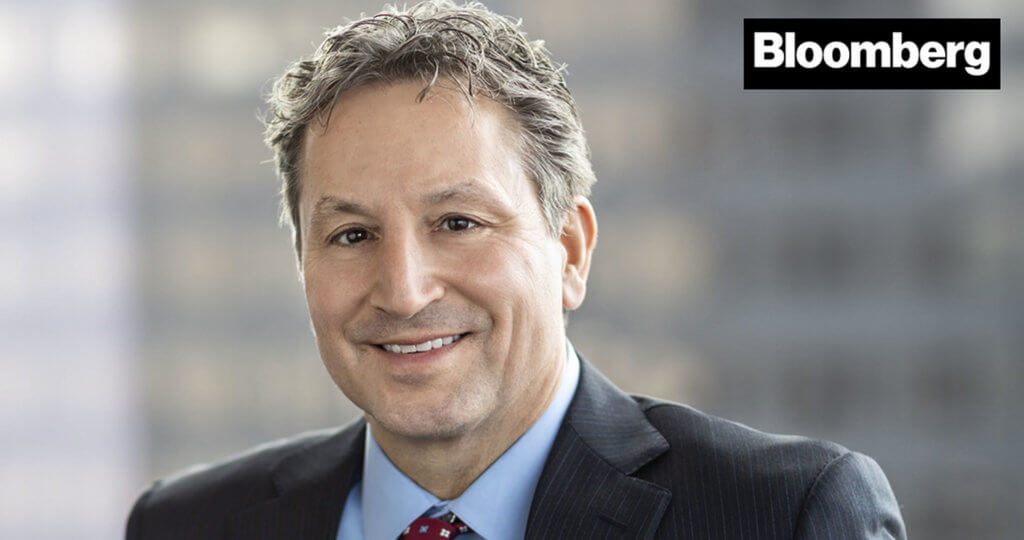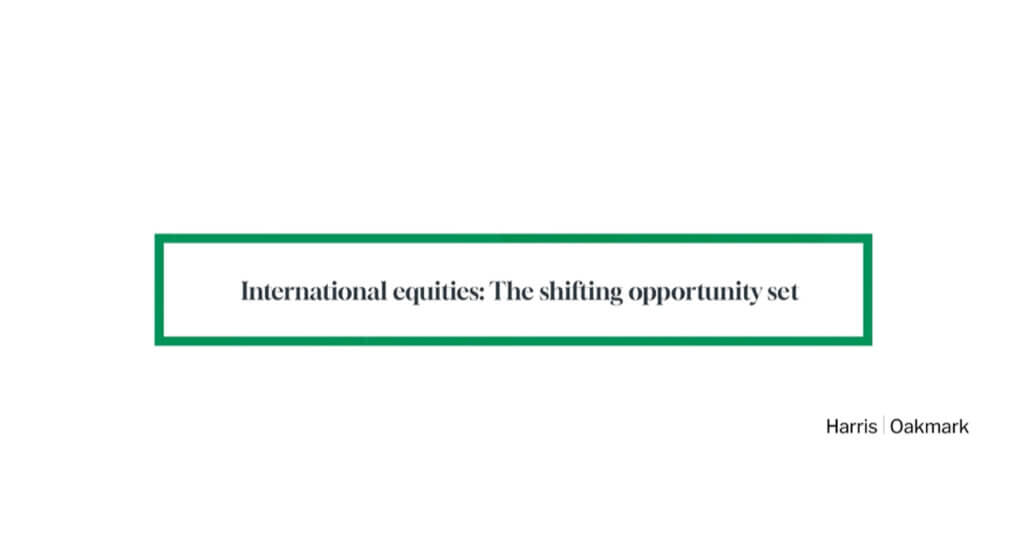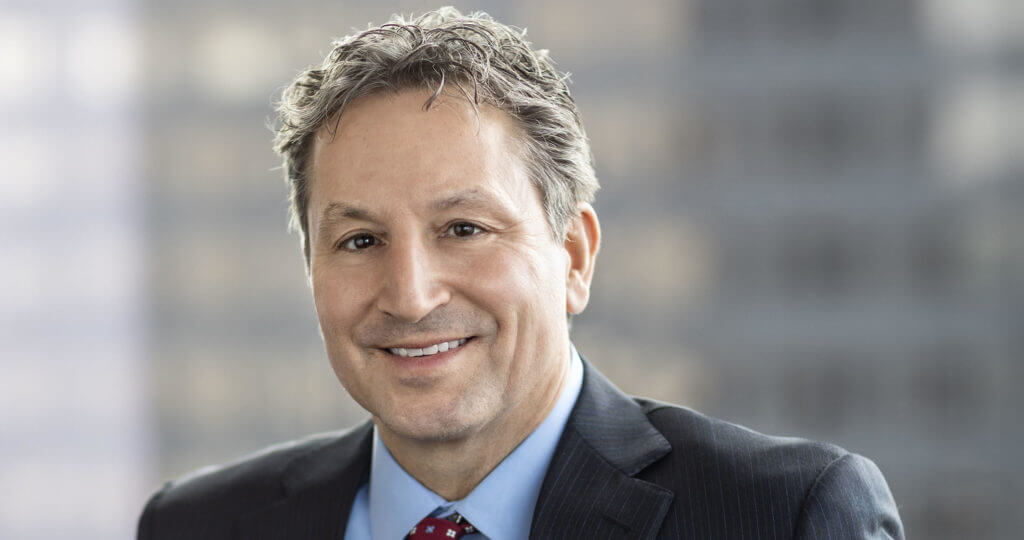Oakmark International Fund – Investor Class
Average Annual Total Returns 09/30/22
Since Inception 09/30/92 7.63%
10-year 3.42%
5-year -5.24%
1-year -30.72%
3-month -14.85%
Expense Ratio: 1.05%
Expense ratios are based on estimated amounts for the current fiscal year; actual expenses may vary.
Past performance is no guarantee of future results. The performance data quoted represents past performance. Current performance may be lower or higher than the performance data quoted. The investment return and principal value vary so that an investor’s shares when redeemed may be worth more or less than the original cost. The To obtain the most recent month-end performance data, view it here.
The Oakmark International Fund decreased 30.7% for the fiscal year ended September 30, 2022, underperforming the MSCI World ex U.S. Index, which decreased 23.9% over the same period. For the most recent quarter, the Fund returned -14.9%, compared to the benchmark’s return of -9.2%. However, the Fund has returned an average of 7.6% per year since its inception in September 1992, outperforming the MSCI World ex U.S. Index, which has averaged 5.1% per year over the same period.
Glencore (Switzerland), one of the world’s largest mining firms with leading market positions in copper, coal, zinc, nickel and cobalt mining, was a top contributor to the Fund’s performance during the fiscal year. At the company’s annual investor day in December 2021, management reinforced its plan to emphasize low-cost, large-scale assets in future-facing commodities while responsibly running down its coal business over time. We appreciate management’s focus on increasing risk-adjusted returns by exiting assets that do not materially contribute to the company’s bottom line, but require a lot of management’s time, are in high-risk jurisdictions, have limited mine-life or face other significant constraints. The price increases in Glencore’s primary commodities, including copper, zinc, nickel, and particularly thermal coal, have boosted the company’s financial results. Through September, Newcastle benchmark thermal coal prices averaged $350/year to date, nearly triple the price realized in the same period in 2021. This generated a 235% increase in EBIT year-over-year for Glencore’s industrial business in the first half. Glencore’s marketing business also benefited from the very tight market conditions for commodities. It generated $3.7 billion of EBIT in the first half of the fiscal year—more than the company usually expects to generate in a full fiscal year (which is typically somewhere between $2.2 and $3.2 billion). As a result of the positive results and balance sheet, Glencore announced a further $4.45 billion of incremental buybacks and dividends with its first-half results. Also during the period, the company reached settlements for the U.S., U.K. and Brazil investigations with figures that look to align with the $1.5 billion provision from fiscal-year 2021. We believe this positive development should eliminate uncertainty for the business and validate many of the changes Glencore has made to its compliance practices. We continue to believe that Glencore is an attractive holding with significant potential for robust cash flow generation, portfolio optimization and enhanced shareholder returns.
Financial services company Credit Suisse (Switzerland) was a top detractor for the one-year ending September 30. As expected, the company’s first-half results reflected a challenging revenue environment with both financial market headwinds and company-specific factors negatively impacting top-line results. Despite this, we appreciated that the core wealth management franchise performed well, and the company’s loan loss provisions are tracking well below estimates. Importantly, capital levels were a bit higher than expected. The company’s common equity tier 1 ratio came in at 13.5%, and management expects that it will remain near that level for the second half of the year. Operating expenditures were elevated due to several factors, but management reiterated its belief that it will reach its goal for the medium term, aided by its anticipated savings of CHF 650 million from digitalization initiatives and more than CHF 200 million from procurement initiatives. The company also announced the departure of CEO Thomas Gottstein who will be replaced by Ulrich Körner, former head of asset management. In addition, the company is formally reviewing its investment banking segment and will likely make substantial cuts that should transform it into a capital-light, advisory-led banking business with a reduced absolute cost base in the medium term. We appreciate management’s effort to reduce tail risk by shrinking and simplifying the investment banking segment and allocating more capital toward its higher returning wealth management franchise. In our view, the market is over-penalizing Credit Suisse for past errors. Looking forward, we believe the franchise has attractive assets and a clear, attainable path toward stronger performance that will benefit current shareholders. Moreover, we remain hopeful that various management enhancements, especially in the areas of risk control and compliance, will enable Credit Suisse to live up to its potential and avoid the pitfalls of the past. We hope that the appointment of Axel Lehmann as the new chairman, combined with the timely execution of the company’s new strategic plan, will not only strengthen Credit Suisse, but revitalize it.
Axis Bank (India), a banking and financial services company, was a top contributor for the quarter ending September 30. Axis Bank reported its first-quarter earnings in August, which included net income up 91% year-over-year; however, we recognize that these results included one-time items. Provision expenses declined 89% year-over-year due to loan upgrades as Axis has been taking excess provisions in past quarters. Asset quality remains sound, in our view. Net non-performing loans declined to 0.64% of total loans while coverage levels remained robust. Management used gains from lower credit revisions to cover trading book losses and to invest in growth initiatives ahead of revenue creation, which inflated operating expenses. We believe the trading losses will largely reverse as Axis has invested in high-quality credit with a short duration, which should revert back to par value over the coming years. Although operating expenses were a bit worse than had been expected, net interest income is tracking well on the back of both loan growth (+14% year-over-year) and net interest margin expansion (+14 basis points year-over-year and +11 basis points sequentially).
Continental (Germany), one of Europe’s largest tire and automotive component manufacturers, was a notable detractor for the quarter. In July, the company warned that free cash flow for the quarter would come in below expectations due to a build-up of working capital related to supply chain issues, material cost inflation and higher receivables due to higher prices. The full release in August added more color for the tires segment, which had organic growth of 11.4%—16.7% of which came from price and product mix and a decline of 5.3%, which came from reduced replacement volumes across all regions. Management indicated that Chinese demand did not pick up as had been expected when lockdowns ended, and the company was unable to fully meet North American demand due to a lack of product availability. Though fiscal-year guidance was confirmed, margins in tires are expected to be under significantly more pressure in the second half due to weaker replacement demand as well as more severe raw material impacts. The company is responding with price increases, though they are not expected to fully offset the inflationary impact. The company’s automotive business reported an operating loss during the second quarter, though margins are expected to recover in the second half of the year due to improving light vehicle production and the benefits of price increases with OEMs. Encouragingly, the company has realized more than EUR 6 billion in order intake in the second quarter, which, when combined with the company’s ongoing restructuring program, supports its medium-term targets. Despite a difficult environment, we believe Continental has undertaken significant action to improve results and that the company’s exposures across the automotive value chain along with its low valuation make it a compelling investment.
During the quarter, we sold our holdings in Toyota Motor (Japan) and NatWest Group (U.K.) in favor of names that, in our opinion, offer more potential upside. These names include the below new positions:
- DSV (Denmark) is a Danish-headquartered transport and logistics company that offers supply chain solutions to customers across the globe. In our view, DSV is one of the best managed freight forwarders in the world and has a strong management team that focuses on profitability, as evidenced by its industry-leading profit margins. We are excited about its 2019 acquisition of Panalpina, which should continue to provide productivity gains through its legacy operations and improve buying scale from steamship lines and airlines. The industry has undergone significant consolidation, which is likely to continue, in our view. While acquisitions have generally proven difficult, we appreciate that DSV has shown its ability to successfully integrate and create shareholder value through accretive acquisitions over the past decade.
- Fujitsu (Japan) is a technology solutions company that offers a wide array of technology services, solutions and products. Fujitsu is going through a significant transformation, including bringing in new management, selling low-quality assets, reducing fixed costs and improving margins. In our view, Fujitsu is no longer the company it once was, and the new management team is driving significant value creation. Japan is behind most developed nations in digitizing its economy. As a result, we believe corporate Japan, as well as the government, will be required to increase IT investments over the next decade. This demand, combined with a massive shortage in IT engineering talent, means that Japanese system integrators should enjoy significant, long-term topline growth, which we believe will also lead to healthy margin expansion. In terms of Fujitsu’s core system integrators business, more than two-thirds of its sales are recurring, the business is capital light, and it generates what we view as healthy free cash flow. Fujitsu management also plans to return the majority of its free cash flow to shareholders through buybacks and dividends. The current buyback authorization is for YEN 150 billion, or 4.6% of shares outstanding, and we expect this to be ongoing—an especially attractive proposition given that the stock is yielding around a 6% dividend today. Finally, we like that the independent chairman has been a change agent for the company and improved corporate value. He also brought an activist investor onto the board, Ichigo, who owns about 7% of the company.
- Schindler Holding (Switzerland) is the second-largest manufacturer and installers of elevators, escalators and moving walks globally. In our assessment, Schindler is a high-quality business that is being negatively impacted by short-term operational issues within its new installation business, which in turn has put downward pressure on group margins. In our opinion, the difficulties in new installation reflect management being too slow to adjust selling prices when input costs started to increase last year and a modularization program that hasn’t simplified the product offering as much as originally hoped. We believe both of these challenges are internal and can be resolved over the next one to two years. Current Chairman Silvo Napoli assumed the CEO role in January and has already replaced one-third of the executive committee to improve operational performance. Napoli was CEO from 2014 to the middle of 2016, when we last invested in the company, and in that time he successfully resolved operational issues. We believe the current share price projects little to no improvement in the company’s margin profile, which we believe is an unlikely scenario.
- Ashtead Group (U.K.) is an industrial equipment rental company with operations in the U.S., U.K. and Canada, whose customers include construction firms, non-construction related contractors and government agencies. We like that the company is the number-two player in what we view as an under-penetrated North American equipment rental market. Its primary competition is approximately 5,000 smaller and less efficient companies that combine to have around 50% market share, which we see as an opportunity for Ashtead. We also appreciate its improved business mix that focuses more on specialty and less on construction and that it offers potentially better through-cycle returns and scale benefits. In our view, the market values Ashtead as if it is a cyclical equipment provider, while we see a structurally growing and scalable services network business with increasing returns on capital and a top management team.
Geographically, we ended the quarter and fiscal year with approximately 89% of our holdings in Europe and the U.K., 7% in Asia, and 1% in Australasia. The remaining positions are 2% in North America (Canada) and 1% in Latin America (Mexico).
We thank you for your continued support.
The securities mentioned above comprise the following preliminary percentages of the Oakmark International Fund’s total net assets as of 09/30/22: Ashtead Group 1.0%, Axis Bank 0.6%, Continental 2.1%, Credit Suisse Group 2.2%, DSV 1.0%, Fujitsu 0.1%, Glencore 2.0%, NatWest Group 0%, Schindler Holding 0.5% and Toyota Motor 0%. Portfolio holdings are subject to change without notice and are not intended as recommendations of individual stocks.
The MSCI World ex U.S. Index (Net) is a free float-adjusted, market capitalization-weighted index that is designed to measure international developed market equity performance, excluding the U.S. The index covers approximately 85% of the free float-adjusted market capitalization in each country. This benchmark calculates reinvested dividends net of withholding taxes. This index is unmanaged and investors cannot invest directly in this index.
On occasion, Harris may determine, based on its analysis of a particular multi-national issuer, that a country classification different from MSCI best reflects the issuer’s country of investment risk. In these instances, reports with country weights and performance attribution will differ from reports using MSCI classifications. Harris uses its own country classifications in its reporting processes, and these classifications are reflected in the included materials.
The Fund’s portfolio tends to be invested in a relatively small number of stocks. As a result, the appreciation or depreciation of any one security held by the Fund will have a greater impact on the Fund’s net asset value than it would if the Fund invested in a larger number of securities. Although that strategy has the potential to generate attractive returns over time, it also increases the Fund’s volatility.
Investing in foreign securities presents risks that in some ways may be greater than U.S. investments. Those risks include: currency fluctuation; different regulation, accounting standards, trading practices and levels of available information; generally higher transaction costs; and political risks.
The information, data, analyses, and opinions presented herein (including current investment themes, the portfolio managers’ research and investment process, and portfolio characteristics) are for informational purposes only and represent the investments and views of the portfolio managers and Harris Associates L.P. as of the date written and are subject to change and may change based on market and other conditions and without notice. This content is not a recommendation of or an offer to buy or sell a security and is not warranted to be correct, complete or accurate.
Certain comments herein are based on current expectations and are considered “forward-looking statements”. These forward looking statements reflect assumptions and analyses made by the portfolio managers and Harris Associates L.P. based on their experience and perception of historical trends, current conditions, expected future developments, and other factors they believe are relevant. Actual future results are subject to a number of investment and other risks and may prove to be different from expectations. Readers are cautioned not to place undue reliance on the forward-looking statements.
All information provided is as of 09/30/2022 unless otherwise specified.






